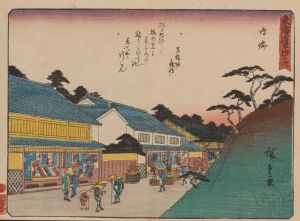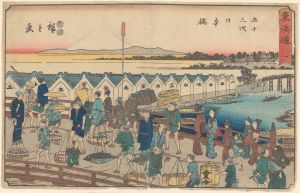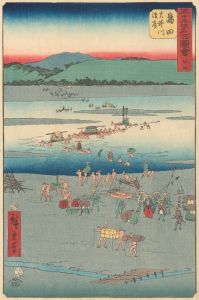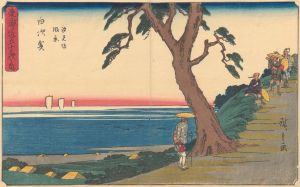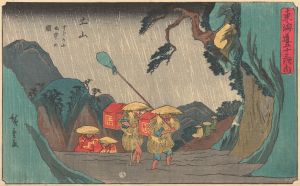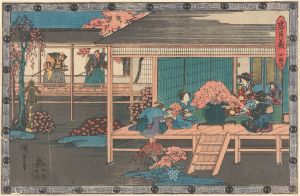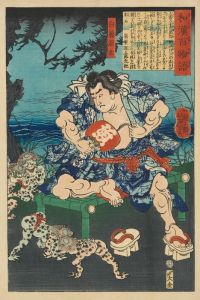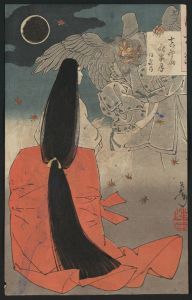
Evening Glow at Seta, from the series Eight Views of Ōmi
A hand-painted replica of Andō Hiroshige’s masterpiece Evening Glow at Seta, from the series Eight Views of Ōmi, meticulously crafted by professional artists to capture the true essence of the original. Each piece is created with museum-quality canvas and rare mineral pigments, carefully painted by experienced artists with delicate brushstrokes and rich, layered colors to perfectly recreate the texture of the original artwork. Unlike machine-printed reproductions, this hand-painted version brings the painting to life, infused with the artist’s emotions and skill in every stroke. Whether for personal collection or home decoration, it instantly elevates the artistic atmosphere of any space.
"Evening Glow at Seta" is a woodblock print by the renowned Japanese ukiyo-e artist Andō Hiroshige. This artwork is part of the series "Eight Views of Ōmi," which Hiroshige created to depict the scenic beauty of the Ōmi Province, now known as Shiga Prefecture. The series is inspired by the traditional Chinese theme of "Eight Views," which was adapted by Japanese artists to highlight the picturesque landscapes of their own country.
Hiroshige, born in 1797, was a prominent figure in the ukiyo-e genre, which flourished during the Edo period (1603-1868). His works are celebrated for their innovative compositions and ability to capture the transient beauty of nature. "Evening Glow at Seta" exemplifies Hiroshige's skill in portraying atmospheric conditions and his keen observation of light and color.
The print depicts the Seta Bridge, a famous landmark in the region, bathed in the warm hues of the setting sun. The bridge spans the Seta River, which flows from Lake Biwa, Japan's largest freshwater lake. In the background, the distant mountains are silhouetted against the vibrant sky, creating a harmonious balance between the natural and man-made elements of the scene. The composition is characterized by its use of perspective and the subtle gradation of colors, which are hallmarks of Hiroshige's style.
Hiroshige's "Eight Views of Ōmi" series is part of a larger tradition of depicting the "Eight Views" theme, which originated in China during the Song Dynasty and was later adopted by Japanese artists. This theme typically includes scenes such as evening glow, autumn moon, and returning sails, each capturing a specific time of day or season. Hiroshige's interpretation of these themes reflects his unique artistic vision and his ability to convey the serene beauty of the Japanese landscape.
The "Evening Glow at Seta" print, like many of Hiroshige's works, was produced using the traditional ukiyo-e technique. This involved carving the image into a series of wooden blocks, one for each color, and then pressing them onto paper to create the final print. The process required meticulous craftsmanship and collaboration between the artist, carvers, and printers.
Hiroshige's work had a significant impact on both Japanese and Western art. His prints were widely collected in Europe and influenced many Western artists, including the Impressionists, who admired his use of color and composition. The "Eight Views of Ōmi" series, and "Evening Glow at Seta" in particular, exemplify the qualities that made Hiroshige's art so influential: a deep appreciation for nature, an innovative approach to composition, and a mastery of the ukiyo-e technique.
Today, Hiroshige's prints are held in numerous museum collections around the world, where they continue to be studied and admired for their artistic and historical significance. "Evening Glow at Seta" remains a testament to Hiroshige's enduring legacy as one of Japan's greatest landscape artists.





